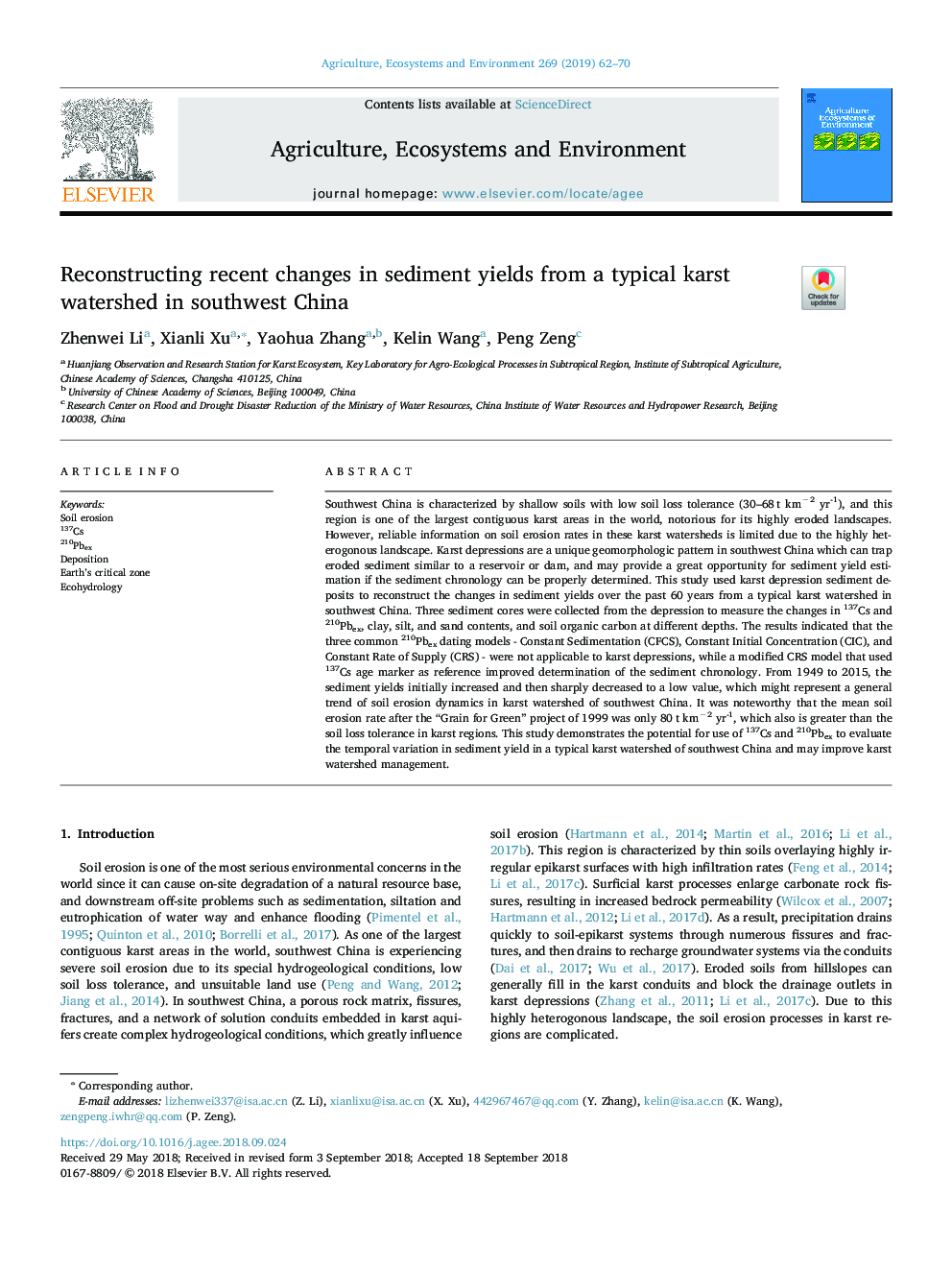| Article ID | Journal | Published Year | Pages | File Type |
|---|---|---|---|---|
| 10970594 | Agriculture, Ecosystems & Environment | 2019 | 9 Pages |
Abstract
Southwest China is characterized by shallow soils with low soil loss tolerance (30-68ât kmâ2 yr-1), and this region is one of the largest contiguous karst areas in the world, notorious for its highly eroded landscapes. However, reliable information on soil erosion rates in these karst watersheds is limited due to the highly heterogonous landscape. Karst depressions are a unique geomorphologic pattern in southwest China which can trap eroded sediment similar to a reservoir or dam, and may provide a great opportunity for sediment yield estimation if the sediment chronology can be properly determined. This study used karst depression sediment deposits to reconstruct the changes in sediment yields over the past 60 years from a typical karst watershed in southwest China. Three sediment cores were collected from the depression to measure the changes in 137Cs and 210Pbex, clay, silt, and sand contents, and soil organic carbon at different depths. The results indicated that the three common 210Pbex dating models - Constant Sedimentation (CFCS), Constant Initial Concentration (CIC), and Constant Rate of Supply (CRS) - were not applicable to karst depressions, while a modified CRS model that used 137Cs age marker as reference improved determination of the sediment chronology. From 1949 to 2015, the sediment yields initially increased and then sharply decreased to a low value, which might represent a general trend of soil erosion dynamics in karst watershed of southwest China. It was noteworthy that the mean soil erosion rate after the “Grain for Green” project of 1999 was only 80ât kmâ2 yr-1, which also is greater than the soil loss tolerance in karst regions. This study demonstrates the potential for use of 137Cs and 210Pbex to evaluate the temporal variation in sediment yield in a typical karst watershed of southwest China and may improve karst watershed management.
Related Topics
Life Sciences
Agricultural and Biological Sciences
Agronomy and Crop Science
Authors
Zhenwei Li, Xianli Xu, Yaohua Zhang, Kelin Wang, Peng Zeng,
